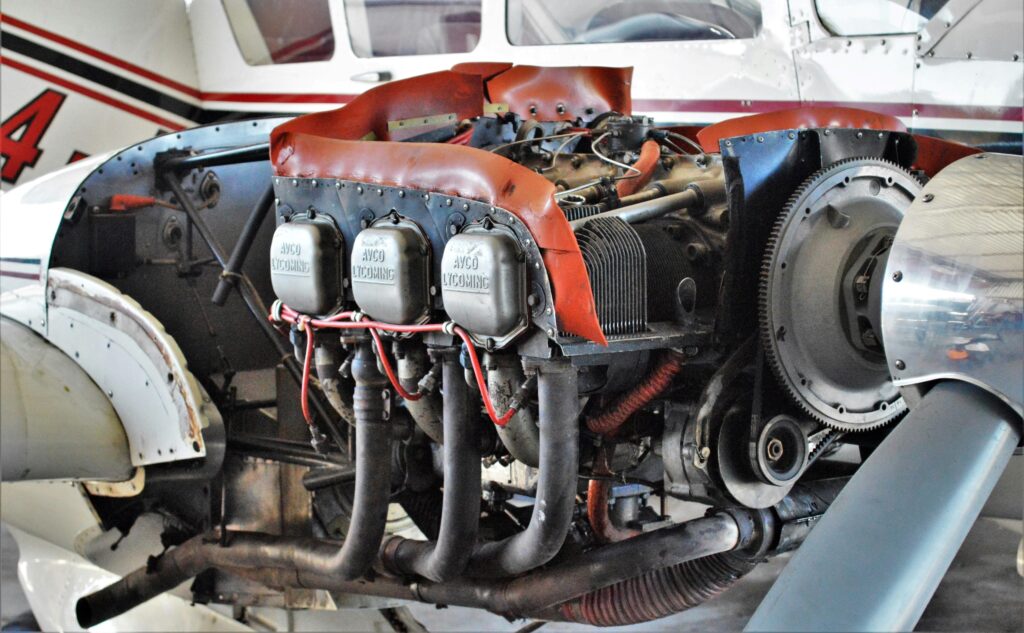Achieving your engine’s Time-Between-Overhaul (TBO) is possible with proper maintenance and consistent operation. Here, we’ll explore five common reasons engines fail to reach TBO and how you can avoid these issues to keep your engine running reliably.
Note: Time-Between-Overhaul (TBO) refers to the manufacturer’s recommended hours or calendar time before an overhaul. It is not mandatory for Part-NCO or Part-91 operators.
Reason #1: Corrosion
Problem: Internal corrosion is a leading cause of premature engine overhauls. Critical components like cam lobes, lifter faces, and cylinder walls are especially vulnerable. Corrosion often results from irregular use, which allows the oil film to fade, leaving parts exposed to moisture. This risk increases in humid climates or near saltwater.
Solutions:
- Regular Flying: Fly every one to two weeks to replenish oil film and evaporate moisture.
- Avoid Ineffective Methods: Manually turning the propeller or ground runs do not protect against corrosion and may even harm protective oil layers.
- Temperature-Controlled Hangar Storage: Insulated, temperature-controlled hangars offer significant protection.
- High-Quality Oils and Additives: Use premium oils and additives, such as ASL CamGuard, to prevent corrosion. Single-grade oil is usually recommended, but multi-grade oil may suit variable temperatures.
- Extended Inactivity: For inactivity over 30 days, follow engine preservation steps in the manual. Chrome or nickel-plated cylinder barrels offer extra corrosion resistance.
Reason #2: Cold & Dry Engine Starts
Problem: Cold and dry engine starts are primary factors that reduce engine life. Cold starts below 0°C cause wear due to uneven expansion. Dry starts, where parts lack lubrication after long idle periods, add wear to critical parts like cam lobes.
Solutions:
- Engine Pre-Heating: Pre-heat the entire engine, not just the oil, using a heated hangar or electric pre-heating system.
- Regular Usage: Frequent flights reduce dry start risks. If inactive for extended periods, preserve the engine as per manufacturer guidelines.
- Minimizing Dry Start Damage: If the engine hasn’t run recently, remove the top spark plugs, spray light oil into cylinders, and crank the engine with magnetos off until stable oil pressure is reached.
Reason #3: Contamination & Deposits
Problem: Contaminated oil, air, and lead deposits accelerate wear and corrosion. Abrasive particles in oil and air, and deposits from rich mixture operation, can lead to premature part replacement.
Solutions:
- Regular Oil Analysis and Filter Replacement: Change oil and filter every 50 hours or four months, or every 25 hours in harsh conditions. Install a full-flow oil filter if needed.
- Induction Air System Maintenance: Regularly check and replace the air filter, and inspect for leaks if silicon levels rise in oil analysis.
- Proper Leaning Techniques: Use full-rich mixture only for engine start and take-off below 3000 ft DA. Lean aggressively at other times to avoid lead buildup.
Reason #4: High Temperatures
Problem: Excessive cylinder head temperatures (CHT) and turbine inlet temperatures (TIT) in turbocharged engines cause premature wear. Although manufacturers set CHT limits at 460°F for Continental and 500°F for Lycoming, maintaining lower limits—below 400°F (Continental) and 420°F (Lycoming)—is ideal.
Solutions:
- Engine Monitoring Equipment: Install engine monitoring units with CHT probes for each cylinder and a TIT probe. Set personal operational limits and monitor closely.
- Temperature Control: Adjust power, airspeed, cowl flaps, and mixture to manage temperatures. Ensure regular inspections of the fuel system and engine baffles.
Reason #5: Excessive Stress
Problem: Excessive stress shortens engine life, especially in high-performance engines. Reducing stress and using suitable power settings help extend engine longevity.
Solutions:
- Moderate CHT and TIT Limits: Maintain moderate temperatures to reduce stress.
- Appropriate Power Settings: Choose settings based on engine characteristics. High-stress engines benefit from conservative power (65% or lower), while de-rated engines can cruise at 75% without undue stress.
- Gentle Operation: Use smooth power changes, avoid shock cooling, and allow warm-up and cool-down time, especially in turbocharged engines.
Ensuring Your Aircraft Engine’s Longevity
An engine’s performance and durability rely on disciplined operations and maintenance. Here’s a summary for preserving TBO:
- Corrosion Prevention: Regular flights, climate-controlled hangars, and quality oils and additives are key.
- Avoiding Cold and Dry Starts: Pre-heat, fly regularly, and use preservation techniques during inactivity.
- Contamination & Deposits: Regular oil checks, filter changes, and correct leaning reduce abrasive wear.
- Temperature Management: Keep CHT and TIT within safe limits with monitoring and adjustments.
- Stress Reduction: Operate with smooth power changes and proper settings to limit unnecessary stress.
About Quest Aeronautics
Quest Aeronautics is a state-certified engineering office for aviation, dedicated to shaping the future of general aviation by providing innovative and cost-effective solutions to enhance aircraft performance and operations. With a focus on CS/FAR-23 and experimental/amateur-built (E/A-B) aircraft, Quest Aeronautics provides a range of services including flight testing, aircraft operations and maintenance consulting, high-quality aviation products, and tailored support for E/A-B projects. Collaborating with industry-leading partners, Quest Aeronautics is committed to delivering unparalleled support and expertise to individuals and organisations in the general aviation market.
About Author
Sebastian, the founder of Quest Aeronautics, is a driven and enthusiastic individual with a passion for aviation. Before delving into aviation, he gained valuable experience as a chemical process engineer and laboratory technician. Sebastian holds a Master of Science in Engineering and a commercial pilot licence, with several fixed-wing aircraft ratings under his belt. He has also completed an introduction course for fixed-wing performance and flying qualities flight testing at the National Test Pilot School in Mojave, CA and is compliance verification engineer for flight.

